Feature your business, services, products, events & news. Submit Website.
Breaking Top Featured Content:
Portland Photographer Showcases Black Cowboys in the Rodeo Capital of the World
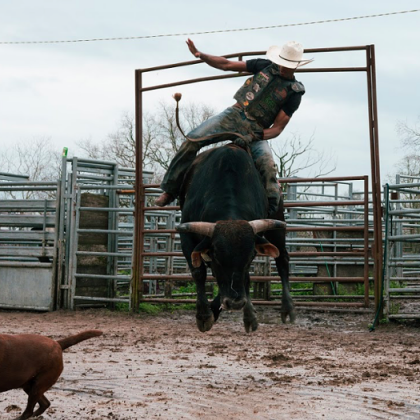
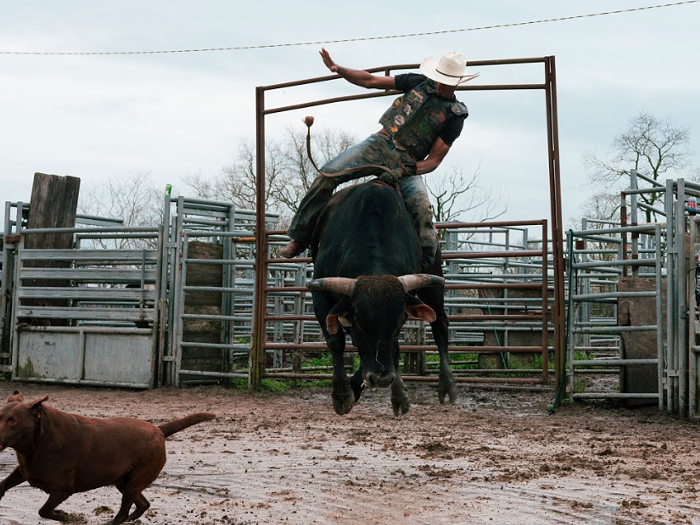
Photographer Ivan McClellan grew up watching Western movies and Bonanza reruns, and going to rodeos with his family in Kansas City. But as a kid, he never saw earnest depictions of cowboys that looked like him.
“I didn’t know a thing about Black cowboys,” says McClellan in a recent interview with the Mercury. Any depictions of Black cowboys he did see were as “a punchline”—Sinbad in The Cherokee Kid, or Cowboy Curtis on Pee Wee’s Playhouse. “What if a Black guy was a cowboy? It was like a joke.”
That changed six years ago when McClellan, who now lives in Portland, went to Okmulgee’s Invitational Rodeo in Oklahoma, which is billed as the nation’s oldest African American rodeo. McClellan was invited by Portland filmmaker Charles Perry, who made a documentary about the rodeo. He was skeptical at first, but that changed when he arrived at the rodeo on a 105 degree day, and “saw Black people everywhere.”
“There were thousands of Black people,” McClellan says. “Some of them were in Western wear, some of them were riding horses in basketball shorts and Jordans. The women were wearing long acrylic nails and braids, and there was hip-hop and Gospel music playing. It felt so familiar to me—it felt like a culture I’d grown up in… It felt comfortable. It felt like something that I knew, even though it was the Western world.”
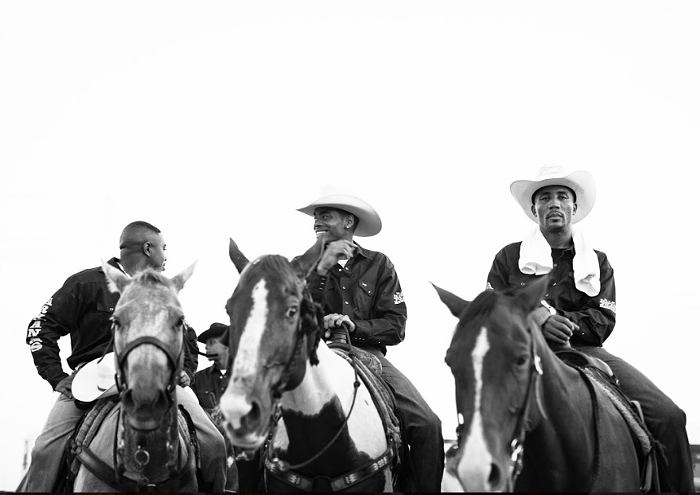
McClellan took his first photos of Black cowboys (which he uses as a gender-neutral term) that day, and he’s been documenting them ever since, at rodeos and farms and ranches across the country. His work is currently on display at the Buffalo Bill Center of the West, a Smithsonian-affiliated cluster of museums in Cody, Wyoming, which is known as the “Rodeo Capital of the World.”
“It’s beyond my expectation of where this would go,” McClellan says. “I started [taking these photos] to be close to Black folks, because that wasn’t something I was getting a lot of at the time.”
Titled Eight Seconds: Black Cowboys in America, McClellan’s exhibit features work from throughout the last six years. Its centerpiece is a 13-foot high print of “Three Kings,” one of the first Black cowboy photos he took.
“They’re three young cowboys on their horses—they just look so cool, and they’re in Western wear, starched button-down shirts and cowboy hats,” he says. “It’s not until you really look at it that you notice the middle rider has a diamond stud earring in his ear. You’re like ‘wait a minute, this is something else going on here… this isn’t just a pure Western photo.’”
That dynamic—Western tradition mixed with modernity and Black culture—is seen throughout McClellan’s work.
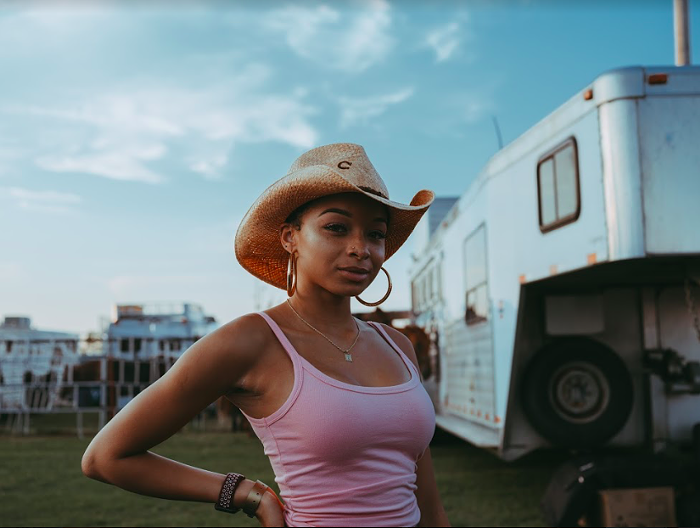
“I try every single time I go to a rodeo to throw away preconceived notions and just come there open,” he says. “Beyond that, it’s just seeing what I see and being curious about it, and thrilled by it. Every time is different.”
Some photos feature Black women who participate in barrel racing, a rodeo event in which competitors must ride their horses around barrels in a particular pattern, and are timed to see who is fastest. Some of the women compete “with long braids and flashy bedazzled hats in hot-pink colors, full faces of makeup and jewelry.”
“They are so stylish, and so grand,” he adds. “But when you see their athleticism, and see they can control a horse going 40 miles per hour, and complete a course going around the arena in 15 seconds—the style is not the point. They’re athletes, but they’ve just got this flair and style that’s an extension of the culture that comes along with it.”
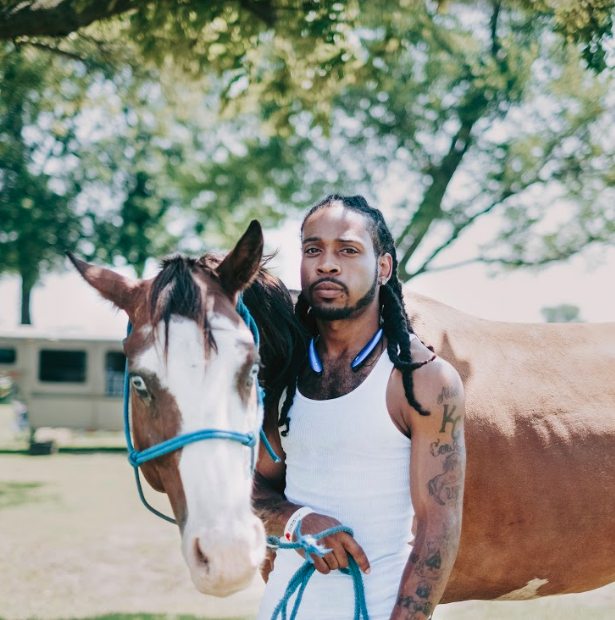
In addition to rodeo events, McClellan also captures Black cowboys in their everyday lives—in their homes, and on their farms and ranches. He’s photographed a few Black cowboys in Oregon, one in Bend, and one in Hillsboro, but says they’re few and far between here, and by nature they have to be “resilient.” At mostly white rodeos in the Pacific Northwest, McClellan has seen Black competitors subjected to both veiled and overt racism.
“I’ve seen guys come up and say weird things to them, and I’ve heard the announcers on the PA system say things that are just flat-out racist,” he says. “It just goes off their back, like water on a duck.”
The Buffalo Bill Center of the West is named for an 1800s white cowboy whose fictionalized image was foundational in constructing the myth of the cowboy in the American imagination. When the center reached out to him about an exhibit, McClellan wasn’t sure if he was ready to show his work there. But ultimately, he couldn’t pass up the historic opportunity.
“To have my work there is so poignant and relevant, and it’s so disruptive to this icon,” McClellan says. “I’m so proud and overwhelmed to have it there.”
You can check out more of McClellan’s work on his Instagram. If you’re planning to be in Wyoming between now and January 7, 2022, be sure to visit the exhibit.
